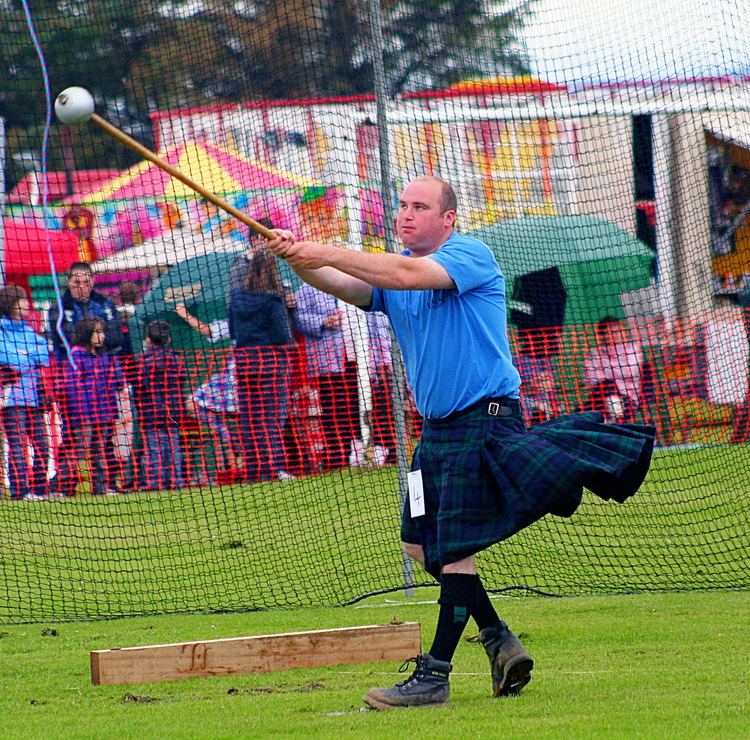 | ||
The hammer throw is one of the four throwing events in regular track and field competitions, along with the discus throw, shot put and javelin. The "hammer" used in this sport is not like any of the tools also called by that name. It consists of a metal ball attached by a steel wire to a grip. The size of the ball varies between men's and women's competitions (see Competition section below for details).
Contents
History
With roots dating back to the 15th century, the contemporary version of the hammer throw is one of the oldest of Olympic Games competitions, first included at the 1900 games in Paris, France (the second Olympiad of the modern era). Its history since the late 1960s and legacy prior to inclusion in the Olympics have been dominated by European and Eastern European influence, which has affected interest in the event in other parts of the world.
The hammer evolved from its early informal origins to become part of the Scottish Highland games in the late 18th century, where the original version of the event is still contested today. It is believed that, like many Highland games events, the origin of the hammer throw is tied to a prohibition by King Edward I of England against Scotsmen possessing weapons during the Wars of Scottish Independence in the late 13th and early 14th centuries.
In the absence of weapons of war, the Scots turned to alternative methods of military training. The Highland Games became a more formalized event after the Highland Clearances of the late 18th century, which were an agricultural revolution that involved forced displacement of commoners in the Scottish Highlands by the aristocracy.
While the men's hammer throw has been part of the Olympics since 1900, the International Association of Athletics Federations did not start ratifying women's marks until 1995. Women's hammer throw was first included in the Olympics at the 2000 summer games in Sydney, Australia, after having been included in the World Championships a year earlier.
Competition
The men's hammer weighs 16 pounds (7.26 kg) and measures 3 feet 11 3⁄4 inches (121.3 cm) in length, and the women's hammer weighs 8.82 lb (4 kg) and 3 ft 11 in (119.4 cm) in length. Like the other throwing events, the competition is decided by who can throw the implement the farthest.
Although commonly thought of as a strength event, technical advancements in the last 30 years have evolved hammer throw competition to a point where more focus is on speed in order to gain maximum distance.
The throwing motion involves about two swings from stationary position, then three, four or very rarely five rotations of the body in circular motion using a complicated heel-toe movement of the foot. The ball moves in a circular path, gradually increasing in velocity with each turn with the high point of the hammer ball toward the target sector and the low point at the back of the circle. The thrower releases the ball from the front of the circle.
As of 2015 the men's hammer world record is held by Yuriy Sedykh, who threw 86.74 m (284 ft 6 3⁄4 in) at the 1986 European Athletics Championships in Stuttgart, West Germany on 30 August.
The world record for the women's hammer is held by Anita Włodarczyk, who threw 82.98 m (272 ft 2 3⁄4 in) during the Kamila Skolimowska Memorial on 28 August 2016.
Men
Non-Legal Marks
Women
Notes
Below is a list of throws equal or superior to 77.12m:
